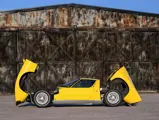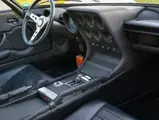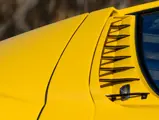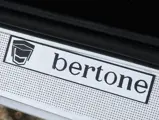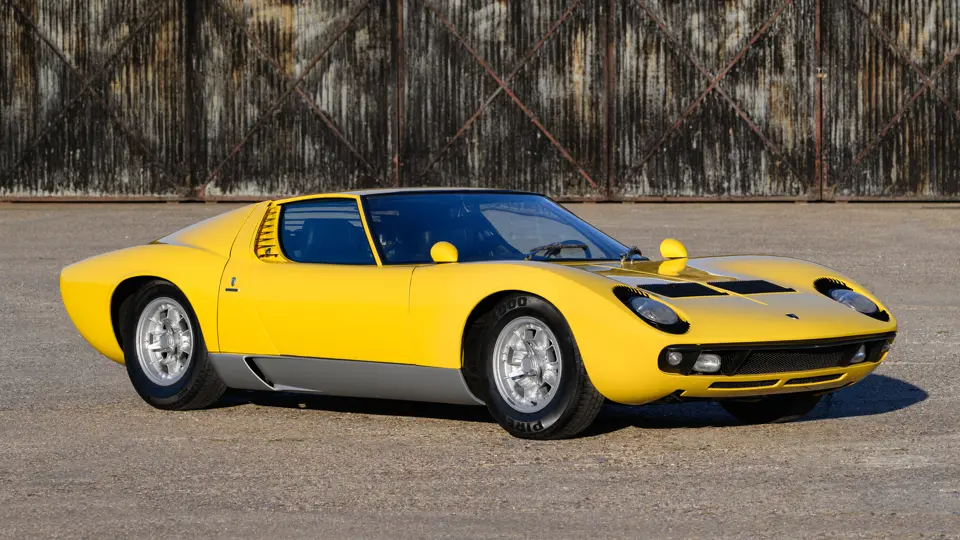
1968 Lamborghini Miura P400 by Bertone
{{lr.item.text}}
$995,000 USD | Sold
{{bidding.lot.reserveStatusFormatted}}
- First generation of Lamborghini’s game-changing, V-12-powered mid-engined supercar
- The fastest production car in the world at time of launch
- Famed for its thundering 4.0-liter V-12 engine, factory-rated at 350 horsepower
- Built for Italian delivery and supplied via Milanese Lamborghini concessionaire, Autoelite
- Accompanied by invoices detailing restoration and maintenance work, plus a comprehensive photographic record of the car’s 2004 cosmetic restoration
When the Lamborghini Miura first broke cover in 1966, the car did not so much launch as land from another planet, bringing with it revolutionary design and styling that would impact the world of supercars for generations. A glistening and sensual slip of a car, dripping with curves and organic lines, the low-slung Miura P400 became the talk of Geneva the instant the curtain fell. It was a sensation not only for its otherworldly looks, but also its cutting-edge mid-engined chassis, which caused a similar stir when it made its debut in Turin one year earlier.
A perfect marriage of futuristic styling and borderline experimental engineering, the model began life as an after-hours exercise by Bob Wallace, Paolo Stanzani, and former Ferrari and 250 GTO wizard, Gian Paolo Dallara. Within the space of a year the trio’s revolutionary chassis design was ready to be shown, featuring a transversely arranged, mid-mounted V-12 engine sharing its casting with a compact five-speed transaxle, neatly arranged for optimal balance and a low center of gravity. Such was the excitement surrounding the project that orders began flowing in almost as soon as the rolling chassis was unveiled to the public in 1965.
Matching the brilliance of the Miura’s mechanical components was tasked to Bertone, and a young designer by the name of Marcello Gandini. Led by Gandini, the carrozzeria produced a strikingly beautiful design that was both deeply attractive and menacingly purposeful, with headlamp surrounds that evoked eyelashes, doors that conjured the image of a raging bull’s horns, and a wild interior unlike anything previously seen on a production car. Completed just days before going on display at the Geneva Motor Show in 1966, the prototype became an instant sensation that assured the Miura’s full production viability, with excitement reaching fever pitch after Bob Wallace drove the show car from Sant’Agata to the Monaco Grand Prix just a few weeks later.
The Lamborghini Miura would go through a number of series changes throughout its eight-year production life, each variation bringing incremental improvements to driver usability and outright performance. But it was the first edition—the P400—that cemented the model’s reputation as the greatest supercar of its era. With clean lines and pure styling, beneath its lightweight aluminum body panels lay four-wheel independent suspension, disc brakes at each corner, and a more powerful 350 horsepower version of the 400 GT’s four-liter V-12 engine, endowing the first run of Miuras with spine-tingling performance and edge-of-your-seat driving dynamics.
Chassis number 3435 is one of these early examples, being the 161st of its type to leave the Sant’Agata factory. Originally finished in the striking combination of Bianco over Nero faux leather and cloth, the left-hand-drive, home-market Miura was delivered to Milanese concessionaire Autoelite on 28 March 1968. Little is known of the car’s early life in Italy, and it subsequently dropped off the radar until September 1994, when the then-red machine was road-registered in the United Kingdom wearing temporary “Q” registration plates.
The car remained in the UK for three years before being sold at auction in Beaulieu in 1997, where it was purchased by an enthusiast based in Monaco, who immediately commissioned restoration work in his native Italy. B. Roadster of Voghera was entrusted with repairing, preparing, and painting the Miura’s bodywork, issuing an invoice in December 1997 for 24,930,000 Lire. Overhaul of the mechanical components followed, with Touring Auto in Milan carrying out various works detailed in an invoice for €28,781.65 issued in July 2001. Whether during these works or at another point in its life, the Miura appears to have been fitted with a replacement engine.
Following restoration in Italy, the Miura was registered for road use in Monaco in September 2002, shortly before being sold in the Principality at an auction in May of the following year. After spending a short time in France, chassis 3435 was again sold, this time to the United States. Documents on file note transfer of the car from Michel Pignard Automobiles in Ecully, France to a US-based collector via Autosport Designs, Inc. in New York. Shipping receipts note that the Miura was flown from London Heathrow to New York’s JFK airport on 9 December 2004, while subsequent invoices for work carried out by the same dealership between October 2006 and June 2007—including an interior retrim, body repairs, and a bare-metal repaint—amount to more than $50,000. During its time in this owner’s care, chassis 3435 made an appearance at the 2007 Radnor Hunt Concours d’Elegance, where—now attractively finished in yellow—the car placed 1st in the Closed Sports Car class.
In March 2008, following four years of ownership, chassis 3435 was sold back to Autosport Designs, Inc., which in turn sold the car to its next owner in New York one month later, taking in exchange a Ferrari 512 BBi Berlinetta Boxer. The next keeper commissioned more than $20,000 of repairs and fettling by the dealer between 2008 and November 2009, after which the Lamborghini was sold on consignment to a New York-based car dealer.
After spending nearly a decade in the United States, chassis 3435 later returned to the United Kingdom, where it was road-registered by the consignor and issued a period registration in December 2013. Since then, the supercar has seen little use, with MoT records suggesting that fewer than 100 miles have been covered since the Lamborghini was imported. As a result, please note that some light servicing will be prudent before this Miura returns to the road.
It is difficult to imagine a machine that made a greater contribution to the direction of travel of the supercar than the Lamborghini Miura. Like a visitor from another world, the lithe sports car set benchmarks for both its engineering ingenuity and revolutionary styling, the ripples of which are still being felt in car design today. Exotic, exclusive, and effortlessly cool, this Italian masterpiece is every inch as breathtaking today as it was on launch. Chassis 3435 presents an unmissable opportunity to acquire a true milestone of automotive design.








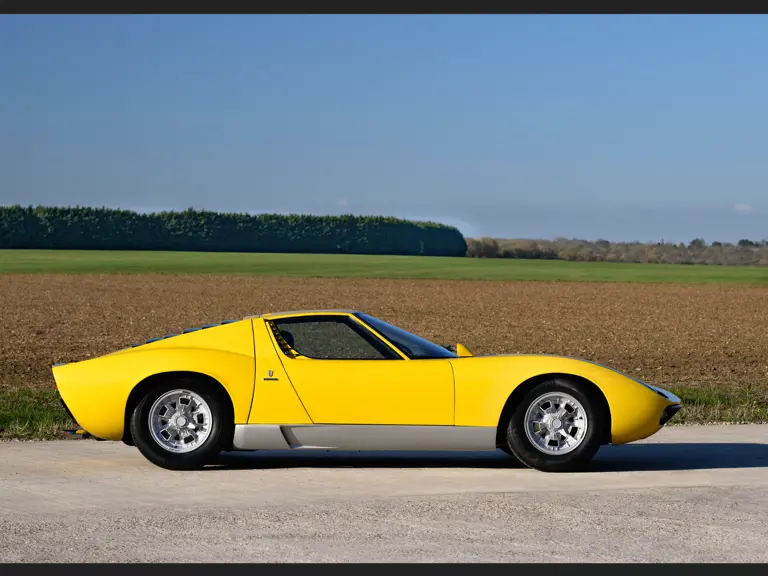


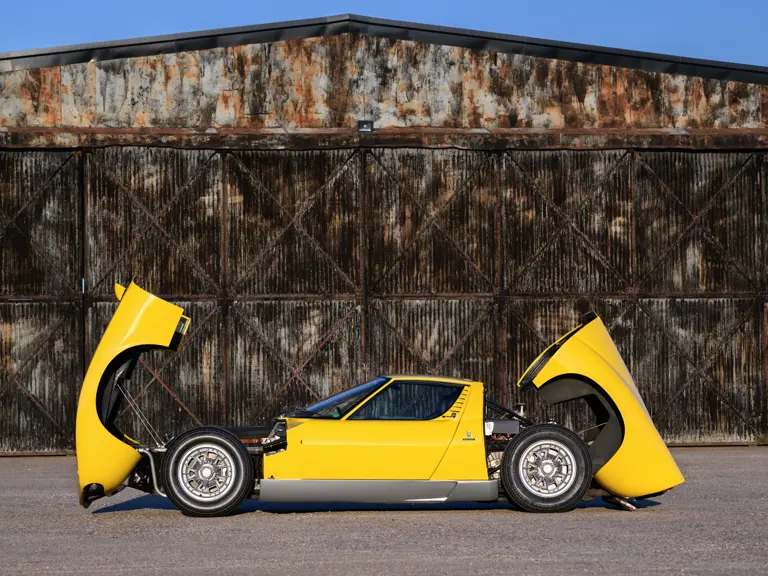




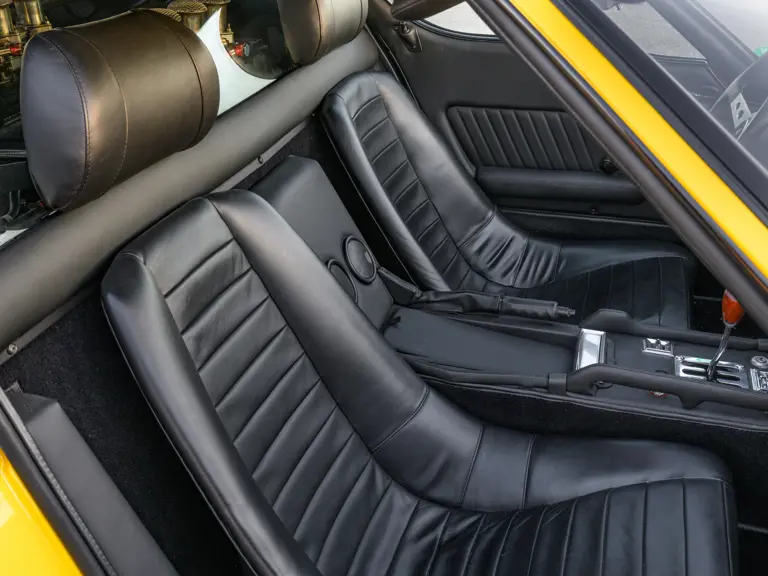











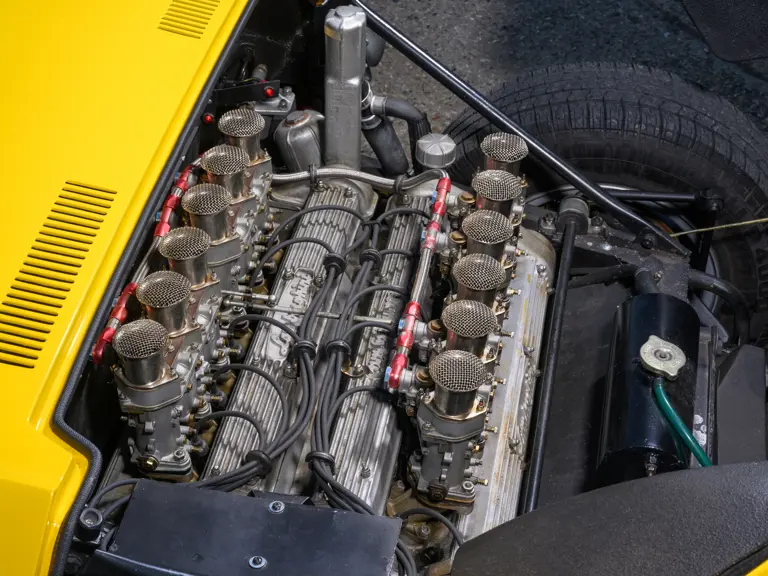


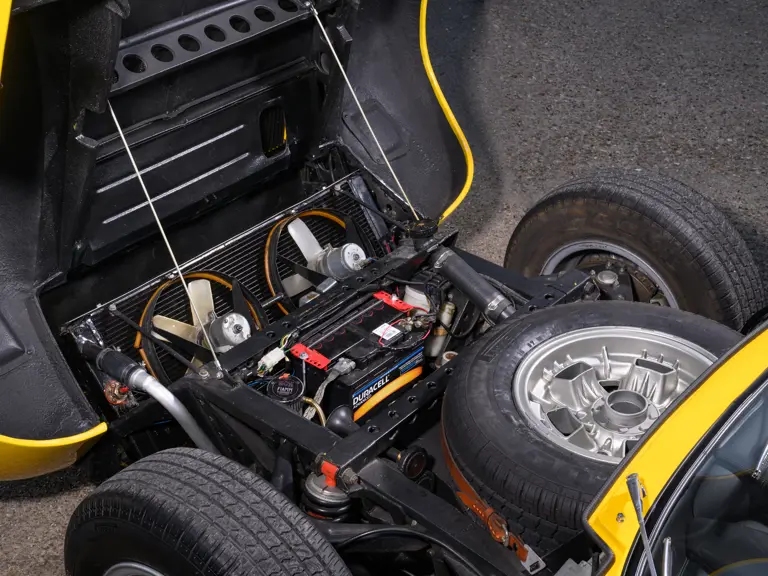


 | Monterey, California
| Monterey, California






